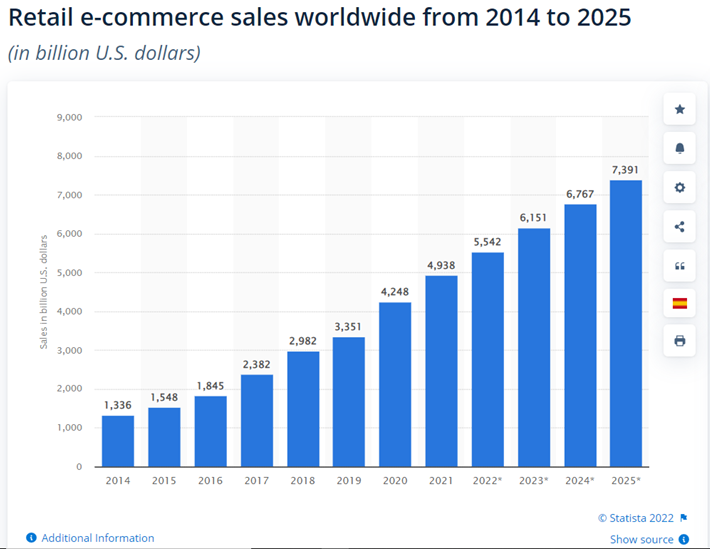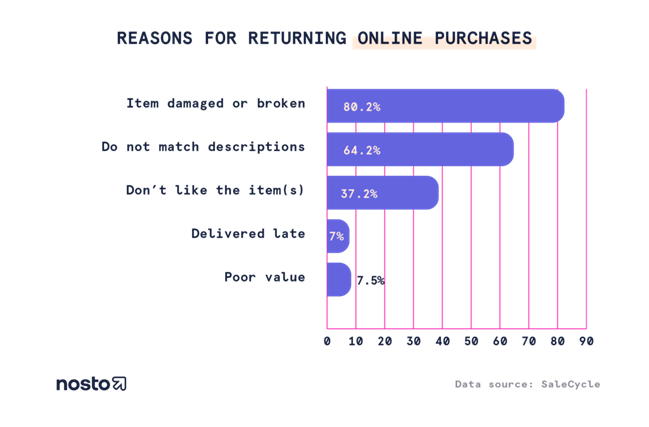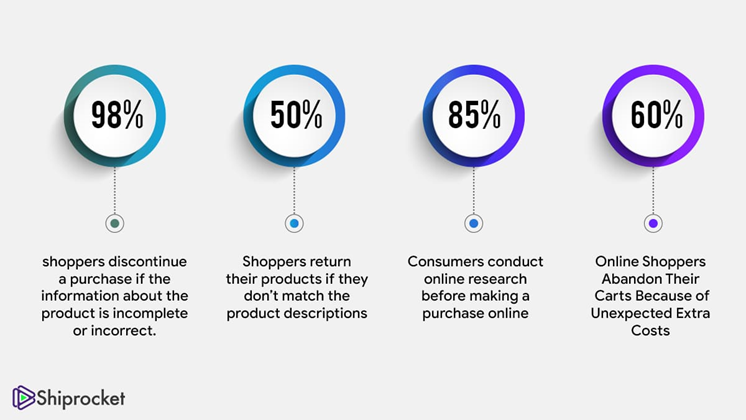
The first contact any potential customer has with a product is the description. It’s hard to oversell how significant good product descriptions are for an eCommerce business.
Without a physical product to pick up and look at, the product will not fully exist in the mind of the potential shopper. All they have to engage with and be won over by are some words and images on a screen.
Creative product descriptions must work hard to paint an enticing picture and accurately describe the product features. When it comes to achieving conversions – getting a browser to become a buyer and clicking that vital ‘add to cart’ button – great product descriptions are like having a power dialer to communicate directly with your consumer base.
Knowing how crucial creative product descriptions are is one thing, but how does an online business ensure their product descriptions are the best they can be?
Here are nine key areas to cover to take the effort out of writing creative product descriptions.
1. Know Your Customers
Knowing your target customers is the first step in creating great product descriptions. It might sound counterintuitive to begin with customers rather than the product itself. But before you can set the tone and style, you need to get a handle on the buyer persona.
It is as important as having content to fit your audience when dealing with your website and marketing tactics. To make sure you know what your customers want, you should know who they are first.
Tracking how customers arrive at your website, what background and age group they might belong to, and what their interests and needs are likely to be; will allow you to tailor how you present the product to those potential buyers.

2. Sell the Benefits
Customers are looking for products that fulfill a need or fix a problem. If you bear this in mind, then you’ll see immediately which features will interest them. But describing every aspect of the specifications can be off-putting. Keep to the qualities your product has that will benefit your customer.
It is basically an extension of thinking about how the product fits the market. So, go back to your marketing plan and team. What are the main selling points of the item? How do these categorically match what you understand of your consumer base’s needs?
For example, if you are selling a mini refrigerator – of course, its power, materials, and design are important – but it is probably of more interest to a customer that it fits under a desk and that it holds 12 cans of cola.
Make a list of the key features that customers are most likely to care about. Describe your product in these terms.
3. Cut the Jargon
While manufacturers’ descriptions have all the specs on your product, it is not a great look to overly rely on their jargon and word choice. As with business text messaging, you want clarity and economy of communication; wordy descriptions can hide the product benefits and features.
Another reason for not including too much of the manufacturer’s information is that you may not be the only online firm selling a particular product. You want to make your company stand out. Surprisingly, although customers might see the same product on various sites, clear, well-written product descriptions can help sway customer opinion and encourage them to choose your company to supply what they need.
It’s wise to check how your competitors have described the same or similar products. Imagine you are a customer; ask yourself which technical words or phrases are jarring or hard to understand? Can you think of a better way of outlining the product’s key features and benefits?

4. Powerful but Natural Language
Getting an emotional response is a sure way to pique interest and make a product attractive. Make sure you choose powerful language; this does not mean exaggerated or overblown. Describing every product as the best or biggest, or most luxurious can be grating and tends to create disbelief in your audience. People know when they are being given a hard sell.
Be clear but subtle in your language choice. Maybe there is a better way of saying that something is value for money or user-friendly. Be wary of overused words and try to choose something more natural but no less impactful.
In short, word choice matters with product descriptions as much as product names and domains; just look at domain names Australia.
Are You a Marketing Manager?
With a Customer Value Journey that strategically builds a relationship with new prospects and converts them into loyal, repeat customers. Click here
5. All the Senses
Think about the senses a customer might use in reality to choose a product. Your online customers can’t pick up your products, so it is very important to replicate these sensory experiences in your product description.
Consider the product’s texture, taste, smell, sound, and visual qualities. Choose adjectives that paint a sensory picture, and allow your customers to ‘virtually’ hold the product in their hands.
Of course, you don’t want to get carried away with flowery descriptions, which would force customers to search out the facts. But a few well-chosen adjectives can engage a customer’s senses and make them far more likely to make a purchase.

6. Tell a Story
Creative product descriptions are about telling stories, very short stories, but stories nonetheless. By ‘story’ we do not mean paragraphs of narrative, it’s just a way of adding an attractive element to the information. The story might be woven between the facts to bring them to life or be a separate, mini element. It might consist of information about where the product came from, who invented it, or was inspired to create it.
Stories can also be images or descriptions that show the customer what it might be like to own the product; how it might look in their office, home, or garden.
As with your choice of language, stories are important for grabbing the emotions and attention of your customer.
7. Scannable
In writing your beautifully crafted product description, it’s worth bearing in mind how short the human attention span is, especially when reading text. For this reason, it is even more imperative to grab your customers’ attention from the get-go.
Keep key parts of your description short and sweet, and make them stand out. If you want to direct customers to a digital catalog where more products can be viewed, make that link clear and easy to click on.
Most of us scan text to find the information we want. For this reason, it is very important to make your product description clear and easy to digest in its layout and choice of font. Bullet points and words in bold help a reader take in the text quickly. Large chunks of text, however well-written, can make them switch off.

8. Write For Humans, but Include SEO
As we’ve seen, keeping your customer in mind as you compose creative product descriptions is the key to staying on track and including the right language to steer consumers to conversions and sales. But of course, optimizing your content for search engines using keywords is also important.
The key tip here is to appeal to those search engines without turning off your human target customer.
It’s a good idea to check the keywords used by your competitors, as well—using online tools to identify those favored in searches. It’s best to have the main keyword in your product title as this boosts your product visibility.
But never be tempted to cram in the keywords at the expense of a good product description. Remember; keywords help your consumer find your product, but they do not necessarily make the product description easier to digest.

9. Quality Images
We have talked a lot about text, but alongside any successful creative product description is a quality image or images. Being able to see the product is key for most consumers. The trick, however, is to make your images as strong as your text; otherwise, you risk that they detract from rather than enhance your description.
The chances of ecommerce business success are greatly increased if your product descriptions look and sound good. Make sure your images show any key features clearly and help tell the story of your product.
Be Creative, Convincing, and Clear
Getting your prospective customer to click the purchase button is like getting a client to sign on the dotted line, physically or via docusign alternatives.
It can be a hard-won result, however great your products are. Your website and products are competing with an ocean of similar online businesses, all shouting for the attention of consumers. Getting traffic to your site is the first hurdle, you don’t want to fall at the next by having product descriptions that don’t do your products justice.
Remember, you are talking to a human being, but don’t neglect SEO. Tell a story and appeal to the senses; sell the benefits, but don’t hard sell. But most of all, to make your product descriptions shine: be creative, be clear, and you will convince your customers to choose your products.

The post 9 Effortless Ways to Write Creative Product Descriptions That Sell appeared first on DigitalMarketer.
Did you miss our previous article...
https://consumernewsnetwork.com/technology-news/digitalmarketer-marketer-of-the-year-20212022






